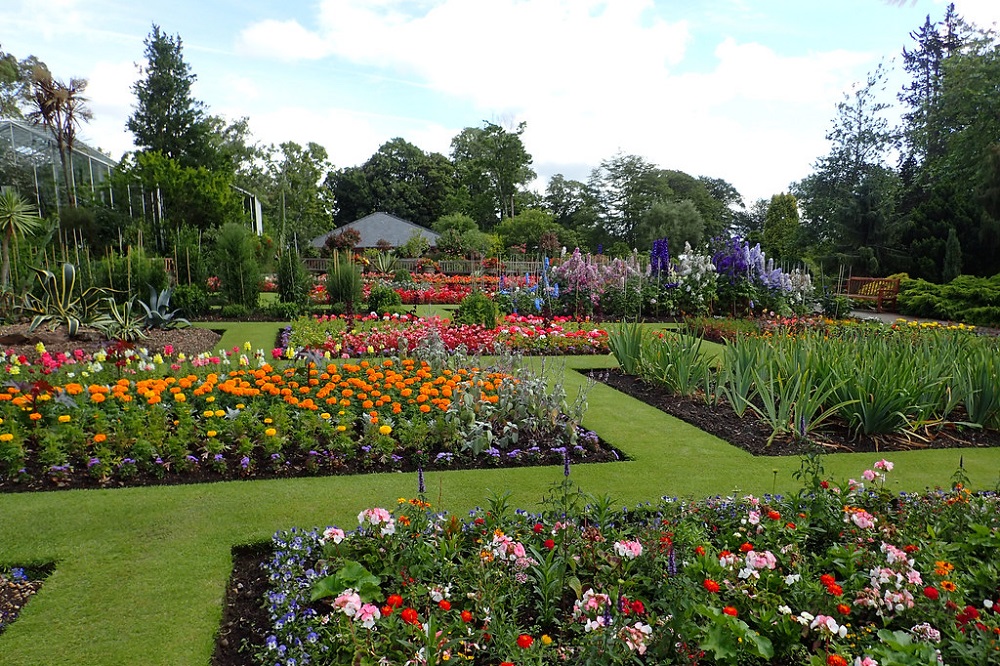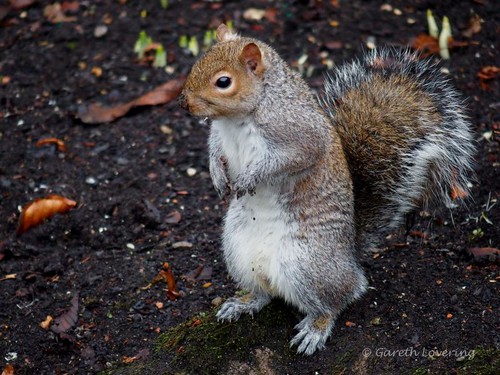Sarah Morgan Jones enjoys a late summer stroll through Swansea’s Singleton Park

Sarah Morgan Jones
Surrounded by the settlements of Derwen Fawr to the west, Sketty to the north, Brynmill to the east and part of the sweep of Swansea Bay to the south, Singleton Park is a 250-acre plot of almost square land in the west of Swansea. The extensive buildings of Swansea University and Singleton Hospital chomp into its southwest corner, and Bishop Gore School nibbles at its northwesterly shoulder, but remains within its boundaries.
Other perimeter markers include a number of listed buildings: a gothic lodge, two gatehouses, a park keeper’s cottage, and a boating lake cottage, all of which have been either sold off or are rented out by Swansea council, the site landlord since acquiring it from the Vivian family in 1919.
The eastern border consists of an ancient, winding wall, which bows out dramatically in places, up the length of Brynmill Lane, separating it from Brynmill Park and Parc Beck. Within the grounds of the park sit the curious Swiss Cottage, and the original homesteads of the family, namely Sketty Hall to the northwest, Singleton Abbey to the southeast, Home Farm to the west, St. Paul’s Church, Sketty to the north; and hidden away from public view inside the ancient walled garden in the centre, the Veranda House.
Grief
The young Henry Hussey Vivian brought Jesse, his new wife, full of new life, to live in the Veranda house. When she died at 22, soon after giving birth to their first child, he left the house in inconsolable grief, and spoke of “the blight which has fallen on me and the blessing that still remains”. In memory of Jesse, the family-built St Pauls’ church, and it was consecrated just three years after her death, in 1850.
The wider landscape of the university campus itself, is rich with natural history. Ancient sessile oaks and prehistoric dunes, cut off by the road from the rest of the beach, sit side by side with an infamous reptiliary, and a pinetum – a pine arboretum which feeds the pine collection at Kew with important specimens. The familiar geese from the boating pond make themselves at home during their regular constitutional to the boggy bit of the field behind the library, and the seagulls tap-dance in the flower beds, all the while keeping an eye out for the stealthy peregrines. A tour of the site with Biodiversity Officer, Ben Sampson will let you look through the keyhole at the remarkable secret life of the campus. But for now, take the hedge-scented path behind the Abbey, leading into the park proper.
Heading towards the eastern gate but bearing left before the temptations of the lovely Brynmill Coffee Shop, the path follows a brook, which, after the rains, bulges and tumbles on its journey to the sea. Joyful and mischievous, the clear crystal water yields memories of my wellie-wielding toddlers who were never able to resist its charms, so many years past.
As I watched, a grey wagtail, with it’s hi-viz yellow underbelly and long tail, went skimming like a stone, downstream, undoubtedly catching critters en route. Continuing up towards the fork in the path, a tornado of ecstatic dogs in all shapes and sizes, expensive crossbreeds with designer portmanteau, poo-cocker, names, galumph past, gleefully free and heading for muddy banks on the one side and the brook on the other. Their owners speed walk behind them, clearly friends on a regular route, their high-protein fresh faces flushed in the rare autumn sunshine.
Continuing past the Swiss Cottage, I enter the beautiful new enclosure developed as a wild garden, complete with ‘stumperies’, bug hotels, permaculture planting of native perennials and trees in full autumn glory. Moving up into the more formal part of the garden, there is a definite change of atmosphere, with mature trees that are not all native. Shades of ochre, rust, red and green layer over each other, the acers and the pines, the birch and the oak, creating dappling canopies beneath which long lines of memorial benches sit in various stages of ageing.

I sit and listen to the distant thrum of cars beneath the bird song, and watch grey squirrels busy-busy, optimistically burying rich pickings for the winter. I wonder if they ever find them again. Dedications on the benches introduce ‘A Professor of Engineering, specialist in rheology and viscoelasticity at Swansea University, Michael Webster who appreciated the beauty of nature and held the love of his family close always’. Further along, and just three years older but thriving with lichen and moss, the last seat of one Graham ‘Pops’ Harcourt, an Olympian. An Olympian!
Some minor research reveals that this Swansea boy, was the youngest gymnast to be selected for the Olympics, when he made the team for the 1952 Helsinki Games. He was a rank-outsider and took a very respectable fourth place overall. Just a few years later, by the time he tried for the Melbourne Olympics, he was already badly affected by arthritis, which eventually took hold of his whole body. His long life and remarkable story is recorded in The People’s Collection Wales. I sit with him, a while, getting to know him.
I continue up to the ancient greenhouses, in the walled kitchen and flower garden for the Vivian family. Wandering past the crumbling sunken garden and under the silvery-spikey eucalyptus parapluie, I come across a couple of the dedicated volunteers, from the Friends of the Botanical Gardens. They are clearing the last of the Doris Day dahlias of the season, their faded resplendence and tubular spikey petals a memory of their jewel like colours, gold and scarlet, giving over their mantels to the berries for the end of the year.
As I examine the rainbow of winter produce in the vegetable patch – leeks, beetroot, kale, carrots and parsnips – I am treated to the glimpse first of a little wren, with its snub-nosed little tail, diving for shelter on my approach. Then more boldly, fixing me with its proud black eyes, and showing off a fine red bib, a robin, sitting on a spade handle, just like on the Christmas cards.
Colour
Ancient walls encircle the Botanical gardens which house the plant nursery full of seasonal colour and open to the public on Saturdays and Wednesdays throughout spring and summer. As I head towards the school I am met with the wide-open sweep of the park, reaching down to the University.
The squirrels remind me of when my son came home with the class toy squirrel, tasked to take the cuddly creature everywhere, photograph it taking part in all his weekend activities, and report back to his class on Monday. Squirrel Irrel, as he was known, had gone on a five park tour – along with a gaggle of children and our old dog.
He posed in Rosehill Quarry’s cockle shell labyrinth, with the geese in Brynmill Park, on the sacrificial stone of the modern stone circle in Singleton, on the mound of rocks in the ornamental gardens which back onto the university campus, on the old man’s face carved into a tree trunk in Clyne Gardens.
The eye of my mind spots them all, racing across the open ground between Bishop Gore – where they would all eventually end up, having their love of learning tested to the point of near extinction – and the university, where my own learning would resume at the end of my forties. Midway between the two is the Learning Tree, a near-gothic sessile oak, standing quite alone.
Hidden
The Learning Tree gained its name in the seventies, when errant lads would vault the school fence and scurry down to the tree, clamber into its ancient branches and lie flat, hidden from view of the malevolent Mitch Man.
I continue down to the Taliesin gate of the university and bear left into the well-hidden ornamental gardens. There are more memorial benches around the lawn, so I rest a while in contemplative company. I look around the park, considering all the trees that have taken root since the Vivians took residence.
They have seen it all. They might remember it all, the children haring around, the truants climbing the tree, the wild boys without boundaries, the squirrels planting new trees every scarlet-ochre-gold autumn.
Our own memories fall like leaves around their trunks and add to the richness of the soil which feeds and sustains them. While those trees live and breathe, so do the memories of everyone who has known the park.
They are the Park Keepers.
Support our Nation today
For the price of a cup of coffee a month you can help us create an independent, not-for-profit, national news service for the people of Wales, by the people of Wales.






Great article more like this is welcome on Nation.Cymru
A correction.
Graham Harcourt was not the only Swansea gymnast to take part in an Olympic games.
Glyn Hopkins then of Waun Wen and later Morriston (and others whose names escape me) took part in the 1948 games in London.
Glyn was a joiner by trade who worked for a well known Swansea firm (again, the name escapes me) and will be remembered in later life as a senior manager in the Addis factory in Pentrechwyth
He was also an accomplished ballroom dancer.
Thanks for that information -very interesting.
Hello Sarah
I shared this on friends of singleton park facebook page. It is a beautiful piece and It was v appreciated. Then I realised who you were!!
Sue Davies